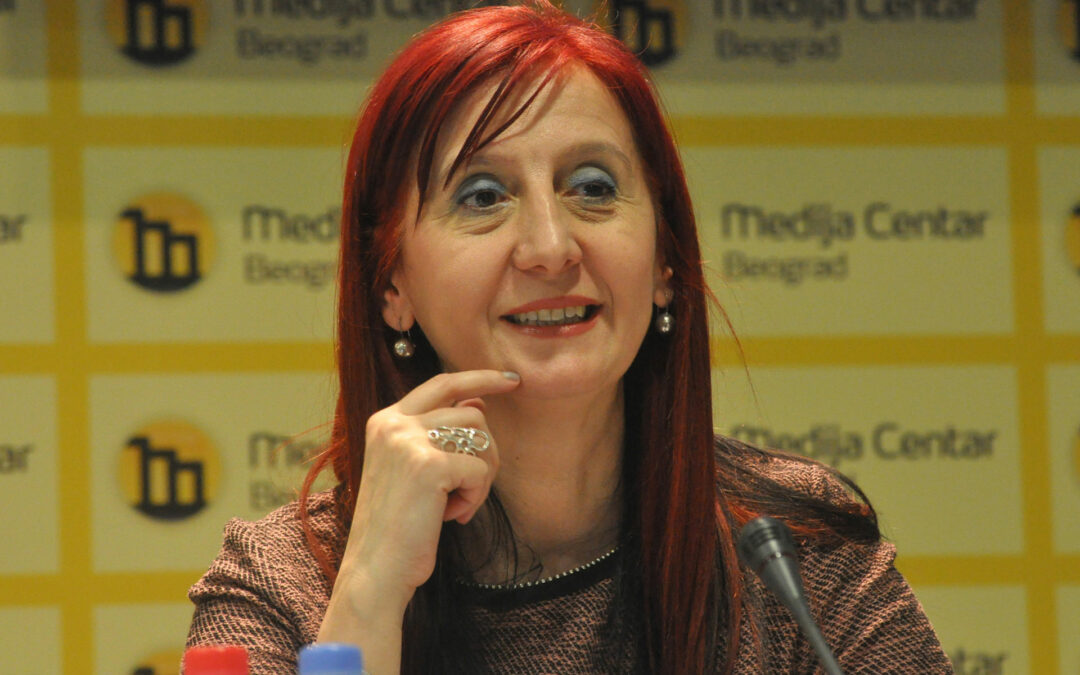We can say that we are living in a time of dynamic and meaningful social change which represents the result of political, economical and a demographic process. One of the characteristics of the modern society is demographical aging. Aging of the population is certainly a gradual process which has been happening for some time all over the world, however most countries are currently in a demographic bonus, so demographic aging is not a burning issue.
However, demographic projections tell us that the number of the elderly in the total population is growing. According to the data from the UN from 2015, the number of people older than 60 in the total population was 901 million, and by the year 2050 the number of people older than 60 will be over 2 billion. According to the same source the number of people over 60 in the year 2000 exceeded the number of kids up to 5 years of age, while the estimate is that the number of people older than 60 will exceed the number of people up to 15 years of age by the year 2050.
People today live longer in better health, stay active longer. Each of us wants to live longer, and the progress of science and medicine allows us to do that. On the other hand, people have children ater in their lives, the structure of the family changes, more money is invested into education and personal development. Therefore, the issue of aging is not an isolated issue, we must be aware that demographic aging affects all spheres of life, work, employment, education, the pension system, personal finance, access to health and social services, transport services, consumption, participation, intergenerational solidarity and economic growth.
The question is whether this trend will lead to an increase in tension between the generations, because fewer able-bodied people will have to support more elderly people? Many are skeptical and believe that there are grim predictions about the conflict of generations, that demographic aging is a threat to social stability and cohesion.
In order for societies to respond to these challenges, it is necessary to introduce the issues of population aging into all public policies, because on the one hand society and economy would be harmonized with demographic aging, and on the other hand it would enable better integration of all age groups. policy making and provide intergenerational solidarity, intergenerational equality, intergenerational equality, intergenerational justice, but intergenerational capital would also be better used. Mainly, it would enable the process of constant optimization of society’s resources and consumption.
One of the important challenges we face is the poverty of the elderly and the need for care, and this often shifts our focus to one side – these issues are important, but we must be careful, because we should not forget the huge group of active older people. Social security in old age is important for dignified aging and a sense of self-respect, there are various aspects of financial security, but pension coverage and sustainability of the pension system is a basic form of intergenerational solidarity. As the authors Gordana Matković and Katarina Stanić state in the publication „Socijalna zaštita u starosti : dugotrajna nega i socijalne penzije“ pension coverage is high at the moment, and the question is what will happen in the future, given that at the moment less than 50% of the population aged 20 to 65 is covered by insurance. Therefore, this will be an important issue of cooperation between generations in the future, and the introduction of social pensions as a form of financial security in old age is one of the possible solutions. The report “Starenje u 21. veku: dostignuća i izazovi” organized by the United Nations Population Fund and HelpAge International in 2012 showed that investing in the social security of the elderly improves the position of the young as well. In Brazil, for example, the gap between actual and compulsory school enrollment has been reduced by 20% for girls living in households with older people receiving rural pensions.
Another challenge is health care; it is vital to provide access to quality health care. With age, incomes decrease, and the costs of health care, medicines, diapers for adults, and rehabilitation increase. All this indicates that health systems around the world are inadequate in relation to the needs of all generations and require adaptation to existing demographic changes. People live longer in better health and while individual responsibility in maintaining health through health prevention activities should certainly be emphasized, one should ask what about those who are functionally dependent and chronically ill? It is necessary to provide a larger number of geriatricians, geronto social workers and general practitioners who have undergone additional education, but it is also necessary to strengthen the capacity of families caring for elderly members, through breaks and education services.
The third challenge relates to employment and education. With the prolongation of life, the olderly live and work longer, so there are claims that they take jobs from younger people , but also that they are worse workers, which is not true. We have two groups of seniors here: those who work – because they feel active enough and want to work, and those others – who have to work because they need income. In addition to benefits, the state needs to consider the possibility of adapting jobs to older workers, to enable them to retrain, flexible working hours, gradual, phased retirement, and that the creation of such policies should include occupational health professionals, psychologists and ergonomics. There is no need to be afraid of demographic aging, but we should look at it as a possibility that it represents. The work of older workers enables intergenerational knowledge transfer, they have experience, knowledge and skills. A good example are older doctors who can use their experience to help young people improve their knowledge.
Adapting to an environment accessible to all ages, a comfortable, safe and integrated living space where the elderly can be autonomous, an active role for the elderly, active participation in social and cultural life, volunteerism, informal care and understanding the needs and specifics of the elderly – all this facilitates intergenerational solidarity.
It is necessary to change the image of the elderly, there are prejudices that go from those open forms of complete denial of values, to a more benign form of paternalistic attitude so that we know better what they need. At the same time, the attitude of the elderly needs to change, and examples of active, but at the same time inspiring elderly people are valuable for that. Because who exactly is an older person? Mick Jagger (74), Sophia Loren (86) and who is the really older person?
It is demographic change that gives us the opportunity to strengthen intergenerational solidarity. But this will not happen by itself and efforts are needed in the following areas:
- Society will have to make better use of the potential of all generations and provide opportunities for everyone to develop their full potential, and in order for that to happen, social policies should be modernized first.
- The perception of people over the age of 50, 60, or 70 needs to change, aging is still seen as a problem because the potential of older people is overlooked by society. Especially these current baby boom generations are healthy and active, they are better educated and trained than previous generations. Companies need to ensure that this great potential is exploited, not lost
- As society ages, investing in the younger generation becomes more important, because the success of the younger generation allows society to support the older ones who depend on other people’s help, which is why high youth unemployment, early school leaving and job insecurity to be resolved.
- We should also pay attention to the middle “sandwich” generation, which takes care of the youngest and oldest members of society, and that care is a significant burden that is mainly on women. A 65-year-old woman very often takes care of her elderly parents, and on the other hand she also takes care of her grandchildren. This enables her able-bodied children to work, but no one recognizes or values her work.
On the other hand, we must be aware that intergenerational solidarity takes place at different levels. Among family members, whether living together or separately; within social networks, among friends, acquaintances, neighbors and colleagues and in society as a whole. We should not forget that intergenerational relations are happening in both directions and that we must not look at them in one direction only – that is the wrong approach. Older people help educate their children and grandchildren, and with age, when the risk of disability increases, they become beneficiaries of the care provided to them – in most cases – by children and grandchildren.
Solidarity between generations should not be understood only in the financial sense, but mutual cooperation, understanding and coexistence of generations is also very important. It is now more important due to the changed demographic structure, given that existing solutions cannot guarantee adequate health and social protection for all citizens, which is the core of political and social security for every society. It is noticed that solutions can be found in changing the relationship between generations, searching for new forms of exchange and new responsibilities on the part of all generations: young, middle-aged and older.
Awareness-raising is important for intergenerational solidarity, not only a call for equality and intergenerational responsibility, but their complementarity will enable the creation of public policies that will reduce the generation gap and the society gap as a whole.
The text was published on the blog post of the Team for Social Inclusion and Poverty Reduction
http://www.socijalnoukljucivanje.gov.rs/blog/?p=8220
Nataša Todorović
Serbian Red Cross
Network HumanaS


